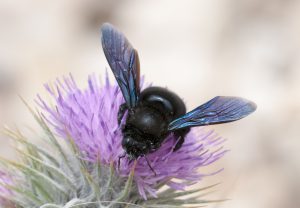Honey Forever
In ancient Egypt bees were thought to come from the teardrop of Re, formally called Ra the sun god. Bees were a sacred gift. The ancient Egyptians were considered the first real beekeepers. Miraculously honey excavated from a 3000-year-old tomb is the oldest sample of honey to date that is still edible.
![By Keith Schengili-Roberts (Own Work (photo)) [GFDL (http://www.gnu.org/copyleft/fdl.html), CC-BY-SA-3.0 (http://creativecommons.org/licenses/by-sa/3.0/) or CC BY-SA 2.5-2.0-1.0 (https://creativecommons.org/licenses/by-sa/2.5-2.0-1.0)], via Wikimedia Commons](https://luckeybee.com/wp-content/uploads/2018/03/AncientEgyptianRelief-BeeHieroglyph-ROM.png)
Ancient Egyptian Relief-BeeHieroglyph
Both cultures began experimenting with honey not only as a sweetener but in remedies. Of course, later researchers discovered why honey is so beneficial. The honey bee has within it the power to turn the sugar in nectar into a complex food source. Honey comes loaded with vitamin B6, niacin, thiamine, pantothenic acid, and riboflavin. Honey also contains minerals such as copper, calcium, iron, manganese, magnesium, potassium, phosphorus, sodium, and zinc. Honey also contains enzymes and hydrogen peroxide.

Honey is antiviral, anti-fungal and chock full of antioxidants. The most medicinal and nutritional value comes from unprocessed raw honey. And while all honey has a variation in particular benefits, sometimes it has to do with where the bee is getting its nectar. Scientists have found that a uniquely high mineral content and antibacterial activity is produced from the honey that comes from Manuka tree nectar. The Manuka Trees in Australia is a species of tea tree that flowers.
Honey bees are not native to Australia but were imported in 1822, but it seems as if the bee and the Manuka tree were meant to be together. Scientists have hypothesized that this special honey may be of great use in helping with bacterias that have become resistant to antibiotics.
![By fr:Utilisateur:Achillea [GPL (http://www.gnu.org/licenses/gpl.html)], via Wikimedia Commons](https://luckeybee.com/wp-content/uploads/2018/03/Cave-Cueva_arana.jpg)
Honey seeker depicted on 8000-year-old cave painting near Valencia, Spain at Cuevas de la Araña en Bicorp
Honey bees have been discovered as far back as the Stone Age. Scientists claim the first pollinating bee was found in northern Spain 110-105 million years ago. No matter how long ago, I speculate that prehistoric man watched wildlife retrieve honey and they got curious as to what all the fuss was about and investigated the substance. I know after the first taste-test they were delighted and soon began harvested its golden goodness.
Photo photography credits
Ancient Egyptian Relief-BeeHieroglyphBy Keith Schengili-Roberts (Own Work (photo)) [GFDL (http://www.gnu.org/copyleft/fdl.html), CC-BY-SA-3.0 (http://creativecommons.org/licenses/by-sa/3.0/) or CC BY-SA 2.5-2.0-1.0 (https://creativecommons.org/licenses/by-sa/2.5-2.0-1.0)], via Wikimedia Commons
Honey seeker depicted on 8000-year-old cave painting near Valencia, Spain at Cuevas de la Araña en Bicorp By fr:Utilisateur:Achillea [GPL (http://www.gnu.org/licenses/gpl.html)], via Wikimedia Commons
http://www.nationalgeographic.com.au/history/honey-in-the-pyramids.aspx
http://www.bbc.com/news/science-environment-34749846
http://labs.biology.ucsd.edu/nieh/papers/Lau2012.pdf
https://www.nature.com/articles/nature15757


